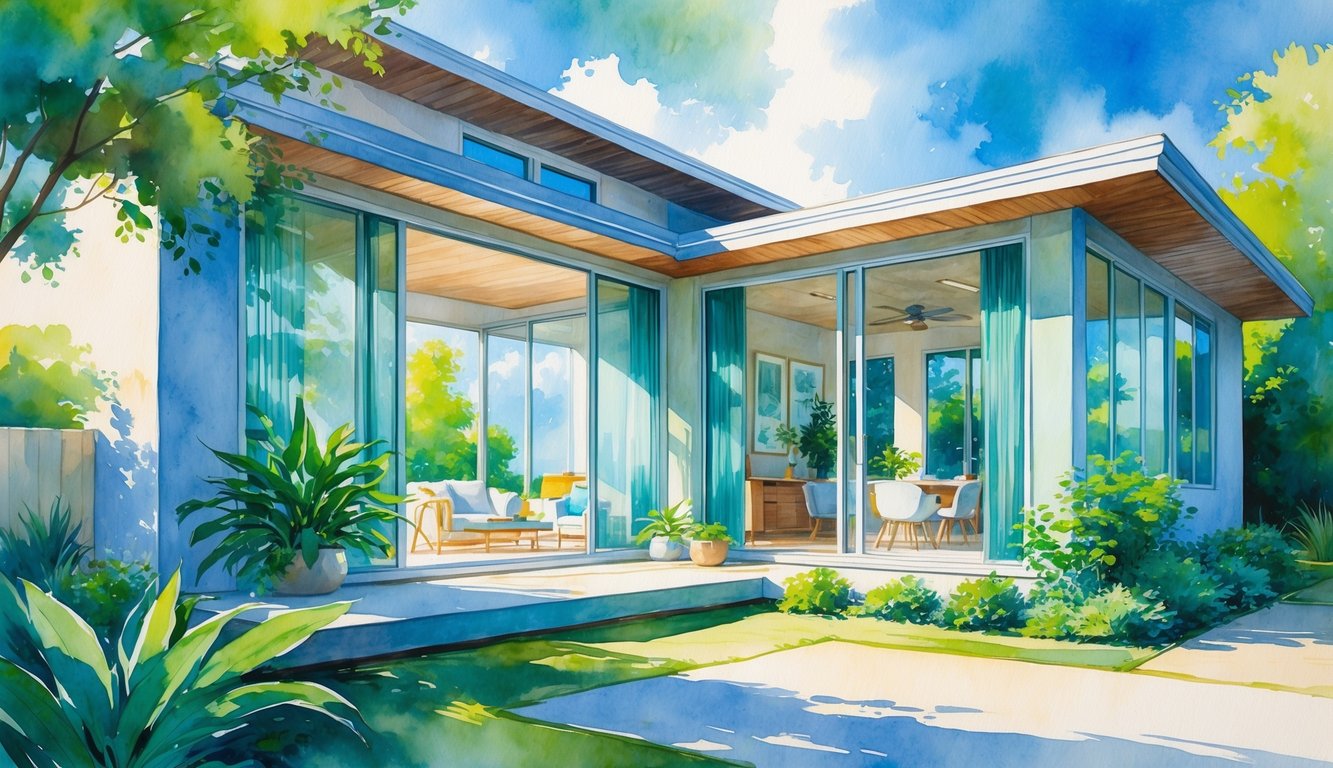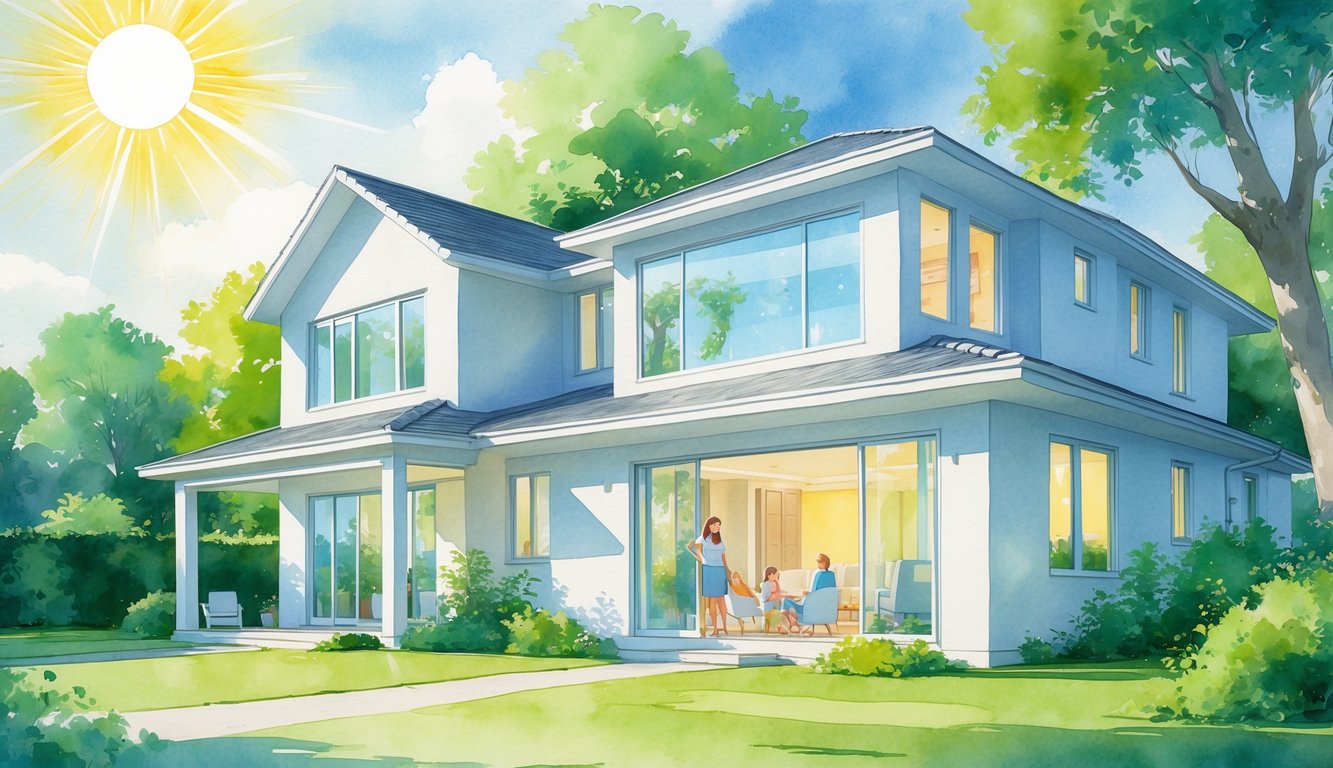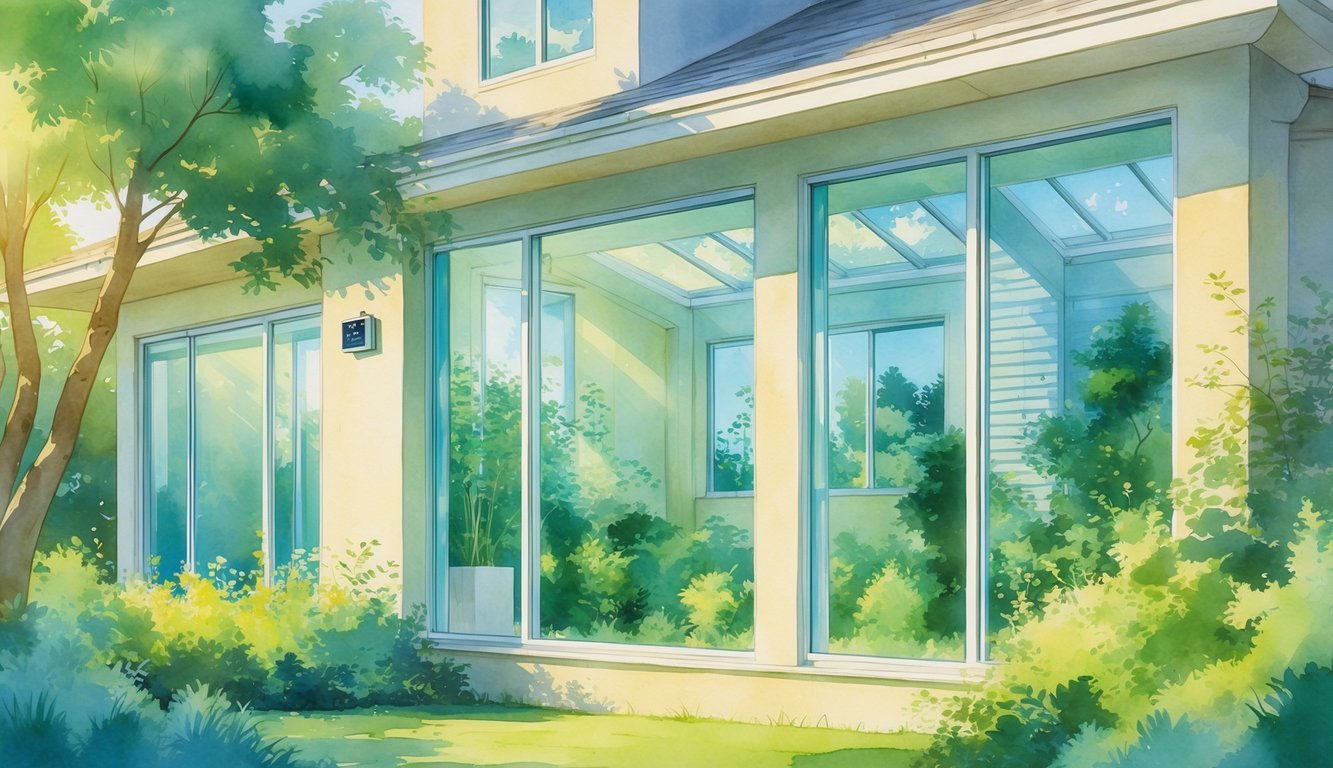
How Energy-Efficient Windows Slash Cooling Costs
Sweaty couch, AC never shuts up, and my electric bill looks like a ransom note. I finally stopped blaming my thermostat last summer when I realized how much air was leaking through old frames. Not all glass is the same, but apparently all bills are high if you ignore window leaks.
Reducing Solar Heat Gain
Imagine that brutal 2 p.m. sun just blasting through your living room window. Regular glass doesn’t do much. Energy-efficient windows with Low-E coatings and double glazing actually block a lot of that heat. Department of Energy says up to 30% of cooling costs are from heat gain and loss through windows. So, no, I wasn’t just being dramatic.
Swapping to energy-efficient windows wasn’t cheap, but a friend swore the heat-blocking coatings work. They reflect infrared rays without making your house look like a cave. Now my west-facing rooms don’t feel like an oven at 4 p.m., and the AC finally gets a break.
Minimizing Air Leakage and Drafts
Okay, so sunlight’s handled, but then the cold air just leaks out. My old windows had gaps you could see daylight through. Air leaks seem minor until the curtains start moving with no breeze, which happened all the time.
Modern energy-efficient windows with proper weatherstripping and tight seals hold in cool air like a Tupperware lid. Drafts disappeared. The house stays cold, and my dog isn’t glued to the fridge anymore. I used to get frost on the inside of my windows in July—how is that even possible? Total nonsense.
Enhancing Indoor Comfort During Summer
I mean, who actually wants a fan in every room and a thermostat war with the rest of the household? That was me, pre-upgrade. I’d crank the A/C, and nope, still muggy corners everywhere. I finally caved and got energy-efficient windows. Suddenly, the house felt less like a patchwork of climates and more like, well, a house. No more weird hot spots where my poor plants gave up. Supposedly, better indoor temps help you sleep and work. I don’t know, but I stopped waking up sweaty and started dreaming about, like, actual vacations instead of melting into my mattress.
And it’s not just about cool air. The silence is freaky—those thick panes plus insulation actually killed off the early morning leaf blower symphony. I barely notice the neighbor’s barbecue smoke anymore, which is either a win or a loss depending on how hungry I am.
Ratings and Certification You Should Know

Honestly, nothing makes me want to give up on energy savings faster than window stickers. All those numbers, stars, and “certifications”—what does any of it mean? I got burned once with “premium” windows that warped in August and let in enough heat to roast bread. So I started reading the fine print. Spoiler: it’s not fun, but if you care about your bills (I do), you have to figure out what those labels actually prove.
ENERGY STAR Ratings and Labels
ENERGY STAR—yeah, it’s everywhere. I used to think it was just some marketing fluff, but it’s actually a real thing, backed by the EPA and Department of Energy. They’re stingy with those stickers; you don’t get one unless your window hits a lower U-factor, tight air leakage, and passes real tests. Talked to a contractor about it—he said if there’s no ENERGY STAR label, don’t bother. He’s not wrong.
Certified windows supposedly cut energy bills by about 12%. I mean, maybe. All I know is, the label means the window survived actual testing. Installers sometimes push “just as good as ENERGY STAR” options, but I’ve never seen that work out. Sure, it’s not perfect—you still have to pick the right version for your region—but it’s the only label that hasn’t let me down.
Understanding U-Factor and SHGC
U-Factor—sounds like something from a sci-fi movie, right? It’s just insulation, lower is better, and if yours is above 0.30, you’re basically paying to air condition the neighborhood. SHGC? I used to ignore it, but apparently, it matters a lot. Lower SHGC means less blazing summer sun sneaking in, but you still get daylight (check ENERGY STAR’s window page if you like details).
SHGC’s a mess—coatings, tints, frame types, everything messes with the number. I kept forgetting which was better, so I just wrote “SHGC below 0.25 = good for hot places” on my toolbox. Manufacturers bury these numbers, which is annoying. Told my neighbor to ask for them—her house is finally not a sauna.
NFRC Certification Explained
And then there’s the NFRC. I mean, “fenestration”? Who uses that word? I thought it was just another pointless fee, but turns out, the NFRC certification is what makes the numbers trustworthy. It’s not just the company saying “trust us.” They test the whole window—glass, frame, spacers—so you don’t get fooled by one good part and the rest leaking air.
I once called their hotline to check a sticker from some random supplier. The rep warned me about knockoff labels, which, yeah, apparently is a thing. When my installer “lost” the NFRC sticker, I just laughed. If there’s no certification, I’m not buying. I’ve gambled enough on my utility bills.
Choosing the Right Energy-Efficient Windows for Your Home

Try telling my uncle windows don’t matter—he swapped out his ancient glass last summer and suddenly his A/C bill was a third lower. Energy-efficient windows mean less heat sneaking in, less sweating at night, and your A/C isn’t fighting a losing battle. Pick the wrong windows and you’re stuck with high bills and hot rooms.
Matching Windows to Local Climate
There’s no one-size-fits-all here. What works in Phoenix is overkill in Seattle. I’ve seen people throw money at triple-pane glass in mild towns and regret it, since they’d have been fine with double glazing and decent frames. If you’re somewhere cold, you want multiple panes (triple is ideal), high R-value, and gas fills like argon or krypton. Sites like renovated.com say matching to your climate actually saves you money—shocking, right?
Hot, humid places? Everyone I know who works HVAC swears by windows with strong SHGC resistance—Low-E or tinted glass, or you’ll bake. Ignore climate and you’ll pay more for features you don’t need. Tried explaining this to my brother, but he got distracted by a squirrel. So, yeah.
Oh, and weird microclimates exist. If you’re near water, watch for condensation—ventilation matters. Tornado zones? Impact glass can actually save your sunroom. I saw it. Half an oak tree in the yard, but the windows survived.
Picking the Best Frame Material
People still buy wood frames for nostalgia, even in termite country. Vinyl is usually the best bang for your buck—low heat transfer, almost zero upkeep. Some folks give me side-eye for saying so. Aluminum with thermal breaks? Way better than old-school aluminum, especially in humidity, but you need that insulating layer or it’s pointless. My contractor friend won’t shut up about them.
Wood looks great, but unless you want endless maintenance or can’t stand synthetic, try fiberglass. It’s got low upkeep, high insulation, and usually lasts longer. Here’s the quick-and-dirty rundown:
| Material | Energy Efficiency | Maintenance | Common in |
|---|---|---|---|
| Vinyl | High | Very low | Most climates |
| Fiberglass | Highest | Low | Extreme hot/cold regions |
| Aluminum (w/ break) | Moderate | Low | Humid/hot climates |
| Wood | Good | High | Dry/mild climates |
New builds love vinyl because it’s cheap, but if you go bargain-basement, it warps in the sun. So, don’t just pick what looks cool on Instagram. I keep saying this, but people get stuck on the “vibe.”